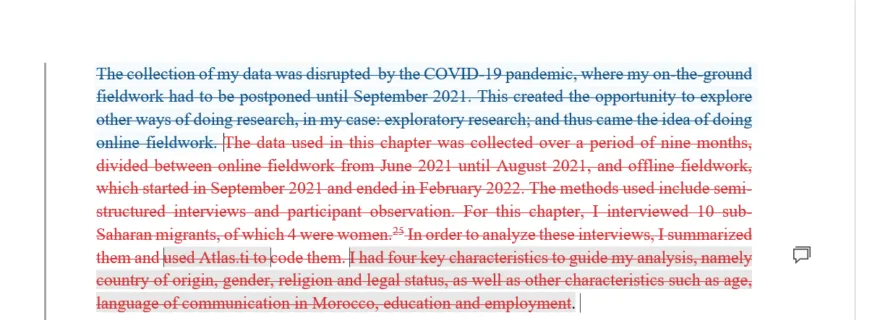Just destroy it!
What do you think of when you have to delete paragraphs, or even pages, of your own writing? Does it come easy to you? It certainly does not to me.
Destroy
In June 2022, the Cobra Museum in Amstelveen hosted an exhibition called The Other Story, which traces the evolution of Moroccan modern art. Among the works was a piece by André Elbaz, called "The Urns", that immediately spoke to me. In it, the artist destroyed his own drawings and paintings, works from different moments of his life, and placed their remains inside funeral urns. Seeing it made me think about my own writing.
Delete
As researchers, we have to do a significant amount of writing, especially the kind that has taken days, weeks, or months to produce. For me, cutting a paragraph or restructuring a chapter can feel like a violent act. I hold onto words that might no longer fit, just because I wrote them or took so much time to come up with them. The idea of deleting feels final. Wasteful.
Distill
But Elbaz's art had made me rethink my approach to writing. His act of destroying his previous artwork was not about erasure, it was transformation. Even in destruction, there was intention. The urns did not hide the efforts already put in, they gave it a new shape, a new life. I started to see my own drafts in the same way. Just because something no longer fits doesn't mean it is lost. It just needs a different urn, or in my case a different folder called "Could be reused later." The writing we remove might find a new home in a new paper, a new blog, or even a footnote.
The point of this blog is not to romanticize deletion (that still stings), but it is about knowing when to let go and when to accept that drafts are just that - drafts.
I had somehow forgotten about it until the moment of writing this blog, simply because it is easy to fall back into old habits.


